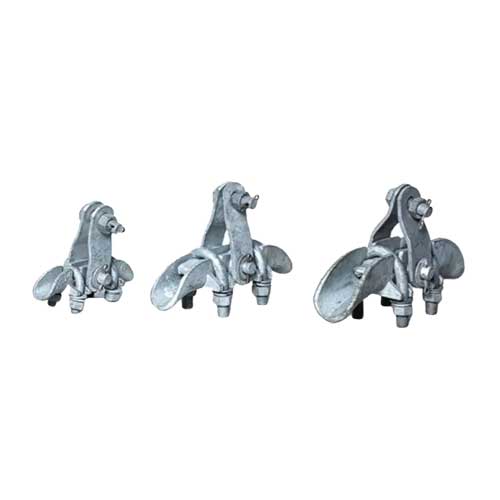Electric power fittings serve as essential components in power systems, functioning to connect and assemble various devices while performing critical roles in mechanical load transmission, electrical conduction, and system protection. Among these fittings, suspension clamps play a particularly important role in power line construction by securely suspending and fixing cables (including both power cables and optical fibers). Let’s examine how the structure of these suspension clamps is designed and formed.
The suspension clamp features a U-shaped bracket paired with a cable clamping block that is firmly attached to this bracket. The clamping block contains a central through-slot designed to hold the cable, with its top surface featuring an opening that connects to this slot. The bracket consists of two pivotal clamp arms that work together to secure the clamping block. The first clamp arm includes a mounting component for bracket fixation, while the second arm is pivotally connected to the first via a shaft at their base. The clamping block itself is rigidly connected to the clamp arms, and the bracket’s opening incorporates a locking mechanism for added security.
During installation, the pivotal connection between the two clamp arms allows the clamping space to open wide, significantly simplifying the process of threading the cable through the clamping block’s opening. Moreover, since the clamping block is permanently affixed to the bracket, there is no risk of it becoming dislodged during operation.

The installation procedure involves:
First mounting the bracket onto a fixed structure (such as a utility pole or transmission tower)
Attaching an insulating block to the cable
Finally securing both the cable and insulating block within the bracket assembly
The suspension clamp’s design offers multiple functional advantages:
Reduces mechanical stress on cables at suspension points
Mitigates wind-induced vibration stresses
Enhances cable damping performance
These features work in concert to provide superior cable protection and longevity in service.
